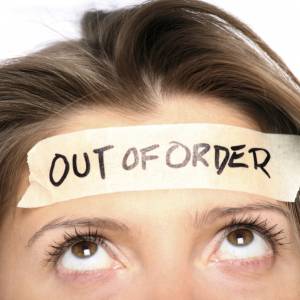
Minerals are tiny but mighty workhorses and they make a BIG difference in how well our bodies operate. If we are too high or too low in any of them, it will throw a wrench in how our body works and how we feel.
Can you name the ONE mineral that millions of women are short on but often don’t know it and drag themselves through the day as a result? It’s IRON!
Iron deficiency is a silent epidemic that unknowingly affects millions of people worldwide. In fact, iron deficient anemia is the most common nutritional deficiency in the world and a major cause of reduced work capacity in adults and impaired mental function in children and adolescents.
Although this problem is more pervasive in parts of the world other than the United States, there are segments of the U.S. population particularly susceptible to iron deficiency.
These segments include teenage girls, pregnant women, women of childbearing age (particularly if they have heavy menses), individuals with malabsorption problems (Crohn’s disease or Celiac disease), low stomach acid secretion (on an antacid?), leaky gut, individuals on chemotherapy, elderly patients, vegans, and individuals with poor kidney function.
Although the only sure way to know if you are iron deficient is to have a complete iron panel, tell-tale symptoms of iron deficiency include: weakness, fatigue, shortness of breath on exertion, dizziness, tinnitus, spots before the eyes, drowsiness, irritability, infrequent menses, unexplained pain or weight gain, and loss of libido.
If you fall into any of the above categories and/or have these symptoms, request an iron panel from your doctor which includes, at the minimum, iron and ferritin (iron stores). A more complete panel would include TIBC and % Saturation.
If your doctor is not willing to order the minimum iron and ferritin markers (and they may resist because your RBC’s (red blood count) and hemoglobin levels appear adequate) or you don’t want the hassle of making an appointment to be seen, no problem! You can take matters into your own hands and order it yourself, using my affiliate online lab. It’s quick and easy. Watch the video here on how to place your order.
What to do if you do have Iron Deficiency Anemia
First, we need to fix the immediate problem at hand and restore your iron levels and iron stores. I recommend supplementing with an absorbable form of iron and if that doesn’t increase your levels sufficiently within a couple of months then ask for an infusion of iron. This can either be in the form of IV or injection.
The most easily absorbed form of supplemental iron is a heme iron polypeptide HIP, iron derived from bovine or cow hemoglobin. Most supplements are derived from plant sources which means the iron is in the non-heme form, with low absorption. HIP has advantages compared to non-heme iron supplements include:
- causes significantly fewer side effects than traditional iron compounds
- absorption is approximately 10 times that of ferrous sulfate
- absorption is not influenced by food intake
The product I recommend for HIP is ProFerrin Clear and can be found on Amazon. I’ve embedded my affiliate link to purchase here.
Second on our list for healing is to determine what’s causing the deficiency in the first place and try to fix it. I’d listed the causes above and it only makes sense to springboard from there.
- Assess the digestive system
- Balancing hormones (which often involves the digestive system).
- Adjusting the diet to include foods that have higher iron content, preferably heme iron. I’ve found supplementation necessary for vegans who are severely iron deficient to effectively increase and maintain their iron levels.
To properly address the first two items, you’ll probably need the assistance from a healthcare professional who understands root cause medicine. (Schedule a chat with me HERE)
But when it comes to diet, YOU have a lot of control. The first thing to know is that there are two different types of iron we get from food: heme and non-heme. Heme iron is found in meat, fish and poultry and as mentioned before, is the form best absorbed by your body. The three foods with the highest amount of heme iron are:
- Liver (amazing awesome recipe HERE! Don’t knock it until you try it!)
- Mussels
- Oysters
The best sources of non-heme iron are:
- Spinach
- Beans
- Fortified cereals
Keep in mind that the same amount of iron from a plant source vs an animal source is absorbed at a much lesser rate. For example, if your burger has 15 mg of iron and your spinach also has 15 mg, your body may absorb 12 mg from the burger, and 6 mg from the spinach. You’re going to have to eat a lot more of your plant source to get the same benefit. Eating something containing Vitamin C helps the absorption of all iron. Try strawberries, kiwi, oranges, or broccoli.
Important Note: If you’re iron deficient and need supplementation, it’s important to speak to your healthcare provider about the proper dosage for you. Iron can accumulate in body tissues and organs and cause toxicity and while iron toxicity is extremely rare from food, it is possible with supplements. I highly recommend monitoring your levels closely if supplementing, especially as you start to heal the root cause of the deficiency and the efficiency of absorption improves.